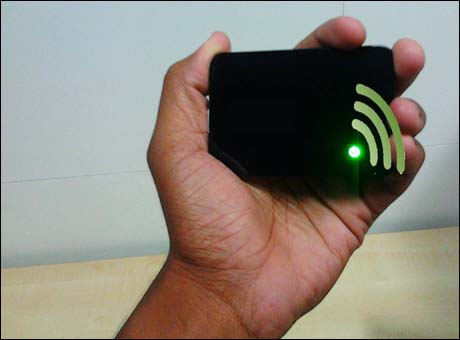
Bangalore, February 52017: In 2010, Finland astonished the rest of the world by making Internet -- with a 1 MBPS connection -- a basic right of all her citizens. It was an idea only slightly ahead of its time: in June last year, over 70 nations voted to pass a UN Human Rights Council resolution, that declared the Internet to be a basic human right. India was in the dubious company of a handful of nations including Russia, China and Saudi Arabia that dissented.
How ironic, that the same government that refuses to concede access to Internet, as a right of its citizens, has been for weeks now, been bombarding them with messages about Digital India and forcing them to do all money transactions on the Internet!
Ultimately governments don't determine the pace of technology -- people do. And many of us, forced to operate e-wallets since November last, now need to be connected to the Internet almost all the time.
This is easier said than done. The data plans for phones from most mobile service providers are costlier, slower and less consistent than what the same providers offer for home broadband connections. I often need to access my mail and send text and pictures, even when I am out of my home or office. A simple act like paying for a cab ride or coffee, through PayTM, can be a hassle, unless I have a reliable Net connection. If I switch to data on my phone, all sorts of rubbish get downloaded for which I have to pay. I wished I could carry my home WiFi router with me and create a hotspot where ever I go -- and now, I can do exactly that, thanks to a new generation of portable, pocket routers, popularly called Mi-Fi, for Mobile Wifi or as I like to think, Mera-Fi!
You may ask, what's new? Pocket sized wireless routers that work on a data SIM, have been around for a year or more. But innovations have made them much more versatile today. Here's how:
1. Unlocked routers, that is, mobile routers that work with any make of SIM and are not tied to one service provider.
2: SD Card routers: with a slot to insert a Micro SD card, so that you can store any files you download, on the router rather than on your phone.
3: Powerbank routers: that come with a built-in power bank, neatly bundling two useful accessories into one.
A simple Web search will throw up dozens of Mi-Fi routers costing anything from Rs 800 to Rs 6000. The cheaper ones work across limited frequency bands and may not match your specific data SIM. Only the most recent models work with 4G SIMs -- and it makes sense to pay a little extra for the router and then go in for a 4G LTE data SIM which will give you the fastest transfer speeds currently attainable in India. Huawei, D-Link, Digisol, TP-Link, are popular brands of unlocked routers. I have been trying out the Digisol 4G router and share my experience here.
While they are not formally marketed or supported in India, you can buy some international travel router brands for Rs 5000 -- Rs 7000, at sites like Amazon. The HooToo HT-TM05 Wireless Hard drive companion, comes with a built-in 10,400 mAh power bank that can you can use to charge phone or even laptop. The RAVpower FileHub, has a 6000 mAh powerbank and also doubles as a multi format card reader.
If you like to stick with one mobile provider for billing convenience, it makes sense to buy the data SIM from the same brand that fuels you phone - Airtel, Vodafone, Idea, Tata etc. Most of them also offer pocket routers. I use a Reliance JioFi pocket router with a 4G VoLTE Jio SIM. The advantage is that the router lets you to experience 4G data speeds and HD voice and video calling, even with 3rd party 2G or 3G phones. For this you have to install a Jio4G Voice app. - Anand Parthasarathy